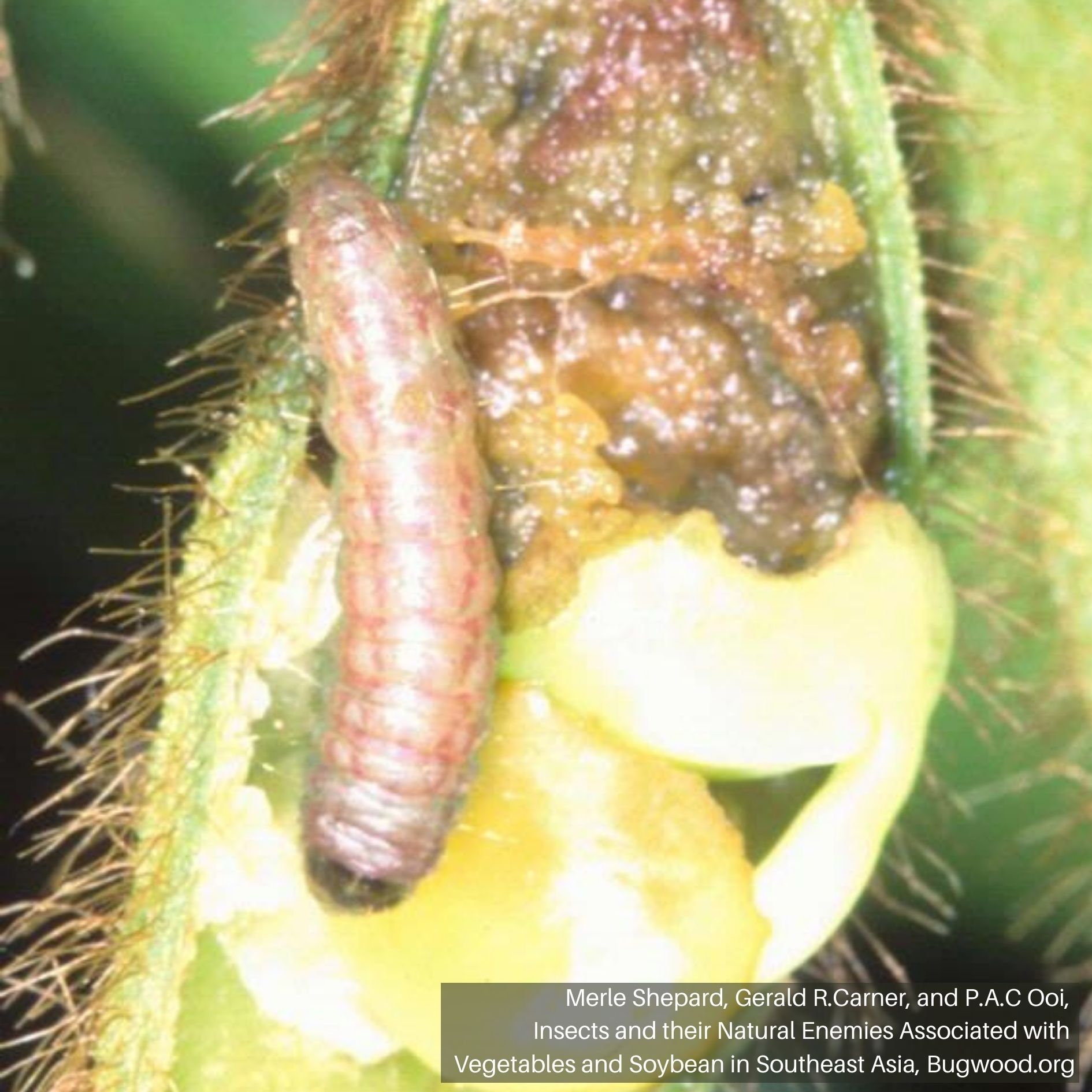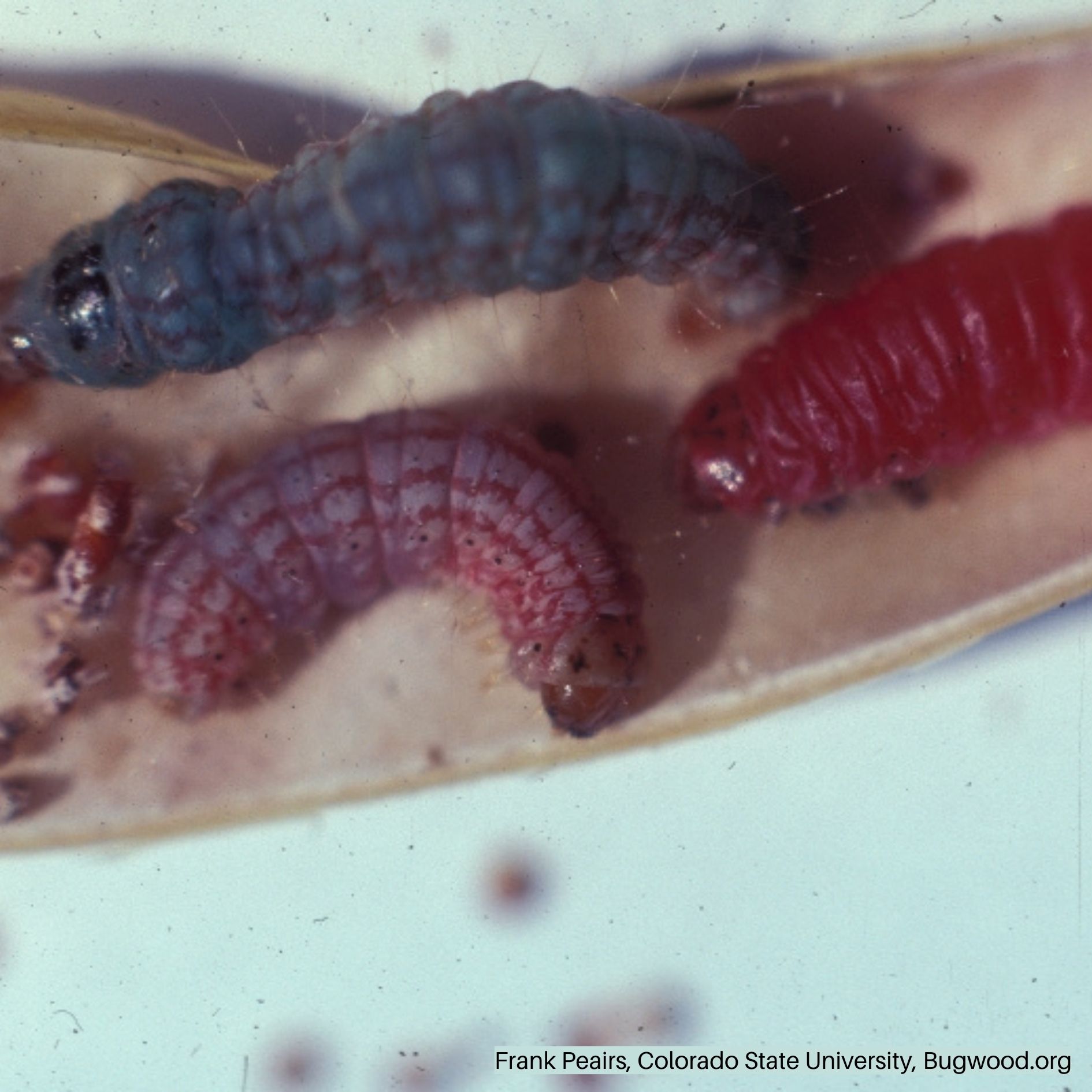Lima Bean Pod Borer
 Lima Bean Pod Borer Life Stages
Lima Bean Pod Borer Life Stages
 Lima Bean Pod Borer with Feeding Damage and Frass in Pea Pod
Lima Bean Pod Borer with Feeding Damage and Frass in Pea Pod
HOSTS
- Beans
- Peas
OVERVIEW
The lima bean pod borer (Etiella zinckenella) is a widespread pest of legumes in the western United States.
DESCRIPTION
Adult moths are grayish-brown with a wingspan of about 1 inch (24-27 mm). They have a yellow-tan band across their wings and forward protruding mouthparts. Newly hatched larvae are cream-colored but turn pinkish as they mature, reaching about .5 inches long (12-17 mm).
BIOLOGY
Egg | Larva | Pupa | Adult
The moths lay white eggs singly or in small groups on the stem, petioles, or flower of the host plant. Once hatched, larvae immediately tunnel into a bean pod to develop. The larvae will go five instars before exiting the pod and dropping to the soil. The larvae will spin a silk cocoon about an inch below the soil surface where it will overwinter or pupate. Adult moths will mate soon after emerging from their pupa. The time it takes for a moth to reach maturity and the number of generations per year is variable depending on the weather.
SYMPTOMS
Larvae feed within the pods and on the buds and blossoms of the host plants. Damaged pods may drop off the plant, leading to larvae moving to feed in a new pod. While feeding on the seeds, larvae will excrete fecal material and silk which accumulate in the pea pods.
SCOUTING
- Pheromone and light traps can be used to monitor adult populations.
GENERAL MANAGEMENT
- Autumn plowing can disrupt larvae overwintering in the soil, reducing emergence in the spring.
- Early season planting can allow crops to reach maturity before high populations of pod borers are out.
- Remove nearby legumes, such as lupine, as they are a common alternative host.



